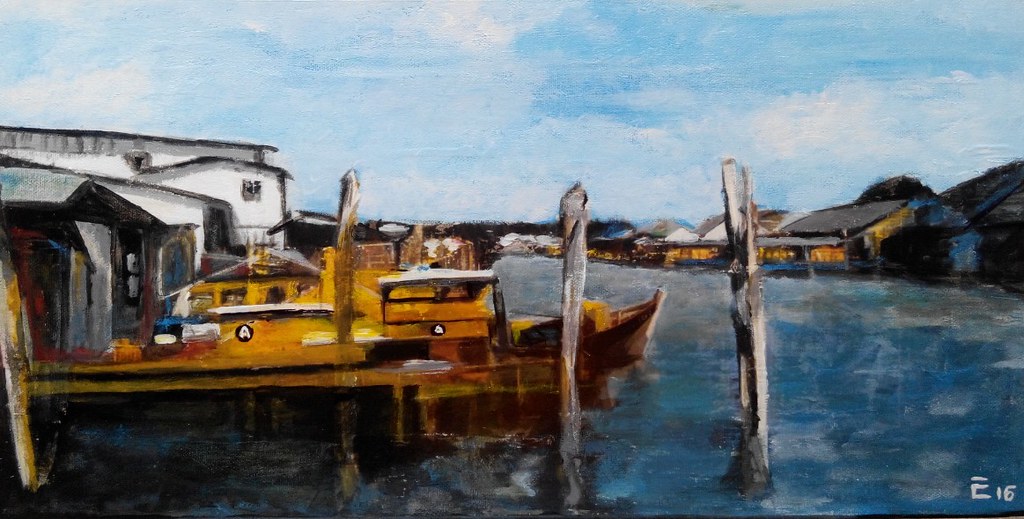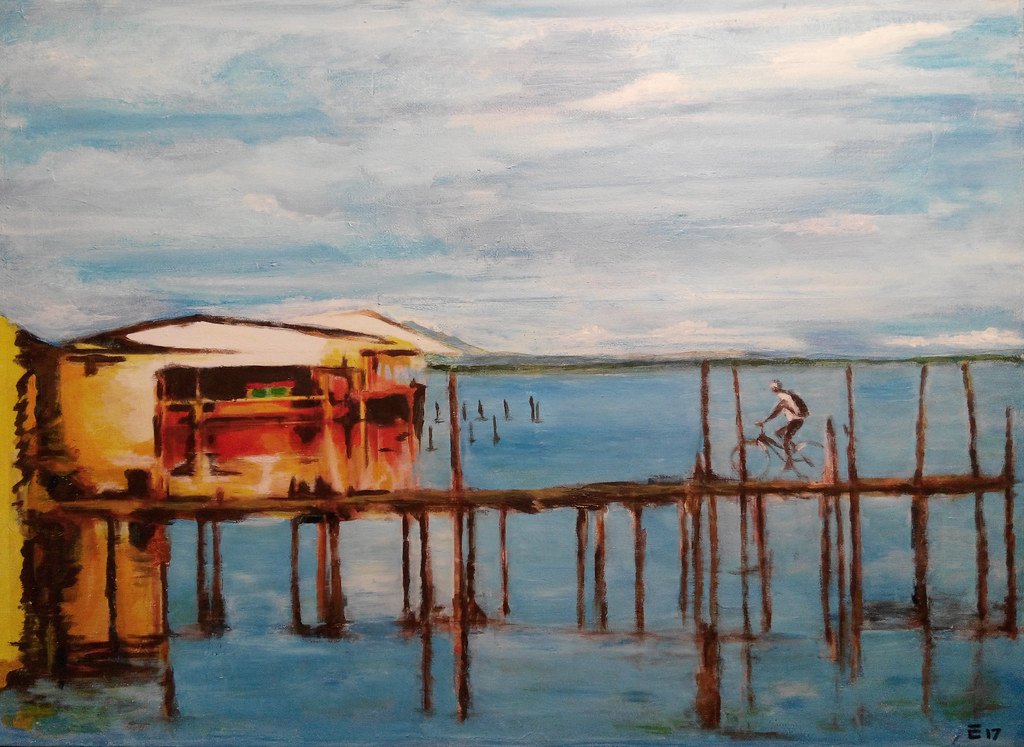"Our world is a water world. The oceans and seas are entwined, often invisibly but nonetheless importantly, with our everyday lives. Trade, tourism, migration, terrorism, and resource exploitation all happen in, at, and across the oceans. The globalized world of the twenty-first century is thus thoroughly dependent upon water worlds"
~ Jon Anderson and Kimberley Peters, 2014

Pulau Ketam (Acrylic on canvas)

Pulau Ketam (Acrylic on canvas)
"Our world is a water world. The oceans and seas are entwined, often invisibly but nonetheless importantly, with our everyday lives. Trade, tourism, migration, terrorism, and resource exploitation all happen in, at, and across the oceans. The globalized world of the twenty-first century is thus thoroughly dependent upon water worlds"- is the opening remark by Jon Anderson and Kimberley Peters in the introduction to a chapter entitled “A perfect and absolute blank: Human Geographies of Water Worlds” which details the significance of sea as a living space of experience, embodied with material character, shape and form.[1] While Thalassography is a familiar subject in oceanography studies, planners and architects have generally given little or no attention to the sea and its relation to human nature. This lack of interest is of no surprise.
People are naturally terra-centric creatures. As land-based terrestrial people, we tend to view the open sea as nothing more than a mere surface to be traversed or gazed upon. Noting that human geography's historical fixation on terrestrial space has left seascape vastly under-researched, some social and cultural geographers have begun to focus their interest toward the importance of the humanity-land-sea relationship in their studies. What is most fascinating about this tripartite relationship is the collusive encounter of these three elements: the moment when land meets sea, with us bearing witness to the ever-changing physical properties of the meeting point, the coast – where the boundary always remains elusive and indefinable.
Our affinity for water is instinctual and ever since time immemorial, people have long been drawn to the sea - long before our ancestors left the African continent - for myriad of reasons ranging from the lure of abundant resources to the fascination of breath-taking seascapes. Today, nearly half of the world's population lives within 100 km of the coastline. By 2025, it is predicted that the above population figure will likely be doubled to 6 billion people – roughly matching today's entire world population.[2]
Although with the increase of people living in the coastal regions will bring about many economic benefits and improved transportation, the same cannot be said of the social and environmental changes caused by the progress of rapid urbanization. Coastal towns, due to the fact that they are often places of rich biodiversity and unique cultural diversity, and typically possess fragile ecosystems, are vulnerable to these changes. This is clearly evident from the many developments that are currently taking place in various fishing village settlements along the coasts of Malaysia.
As a consequence of these changes, people living in the affected communities are increasingly lamenting their concern over the deprivation of their livelihood and the loss of the very qualities that initially attracted them to settle in the respective places. It is never an easy task for outsiders, like planners and architects, in trying to understand what community perceptual values are let alone to know what communities perceive to be the most important features in their neighbourhood as far as local place-character is concerned. This is because the notion of place-character is a complex experiential phenomenon, and cannot be understood merely in terms of the concept of tangible extension as the nature of place is multi-dimensional.
The word character in its simplest meaning signifies the cumulative features of attributes that make up and distinguish an object, person or place from others. Place-character, thus is the composition of all tangible and intangible features, both built and natural, and meanings associated to a place that help give it a distinctive and unique identity. Hence, no one methodology is ever the "right" tool to use when reading places; instead a holistic use of multiple readings and the helpful strategies offered by a variety of disciplinary approaches can be applied to assist us in realigning our architectural thoughts.
There are times that we need to put aside our professional judgment and know-how, and truly listen to the sound of waves breaking heavily against the shore. For no two consecutive days will the shoreline stay precisely the same. So is place-character. Perhaps by turning our attention to the sea and engaging a dialogue with it will somehow give us some insights into how coastal communities constantly define and redefine their identities, cultures and place-characters.
[1] Peters, Kimberley and Anderson, Jon, “Water Worlds: Human Geographies of the Ocean”, Ashgate Publishing Ltd, Surrey, 2014, p.3
[2] Creel, L.”Ripple Effects: Population and Coastal Regions”. accessed online at http://www.prb.org/Publications/Reports/2003/RippleEffectsPopulationandCoastalRegions.aspx, on February 8, 2016.
